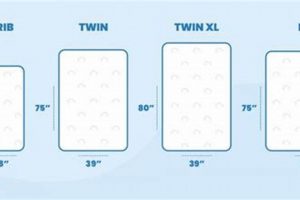A comparison of sleep surfaces focuses on two prevalent types: those incorporating individually wrapped coils and those constructed entirely from pliable materials. The first type offers support through a network of independent springs encased in fabric pockets, while the second relies on varying densities and compositions of synthetic or natural substances to provide cushioning and structural integrity.
The selection of a suitable sleep surface is paramount for ensuring proper spinal alignment, pressure relief, and temperature regulation throughout the night. Historically, innerspring designs were the industry standard. However, advancements in material science have led to the increased popularity of foam-based alternatives, each presenting unique advantages in terms of comfort, durability, and cost.
The subsequent discussion will delve into a detailed examination of the characteristics, benefits, and drawbacks associated with each type of construction. Factors such as motion isolation, edge support, and suitability for different sleeping positions will be considered, providing a comprehensive understanding of the key distinctions between these two prominent options.
Considerations for Selecting a Sleep Surface
This section provides practical guidance to aid in the selection of an appropriate sleep surface, focusing on key aspects to consider before making a purchase.
Tip 1: Evaluate Support Requirements: Assess individual needs regarding spinal alignment. Individuals with back pain may benefit from the targeted support offered by individually wrapped coils, while others may find sufficient support in denser foam options.
Tip 2: Assess Pressure Relief Preferences: Consider sensitivity to pressure points. Foam surfaces, particularly those incorporating memory foam, excel at conforming to the body’s contours and distributing weight evenly, potentially reducing pressure on sensitive areas.
Tip 3: Analyze Motion Isolation Needs: Determine the importance of minimizing motion transfer. Individually wrapped coils offer superior motion isolation compared to traditional innerspring systems, while certain foam types also provide excellent motion dampening.
Tip 4: Investigate Temperature Regulation Properties: Explore the breathability of different materials. Some foam formulations can trap heat, while coil systems generally allow for greater airflow. Consider options with cooling technologies if temperature regulation is a primary concern.
Tip 5: Review Edge Support Specifications: Evaluate the stability of the perimeter. Reinforced edges provide a more consistent sleep surface and facilitate easier entry and exit from the bed. Coil systems often offer superior edge support compared to some foam constructions.
Tip 6: Consider Durability and Longevity: Research the expected lifespan of each type of mattress. Higher-density foams and quality coil systems generally offer greater durability. Examine warranty information and customer reviews to assess long-term performance.
Tip 7: Factor in Budget Constraints: Acknowledge the cost implications of different materials and constructions. Prices can vary significantly, so establishing a budget beforehand is essential. Compare features and specifications within the desired price range to maximize value.
These tips provide a framework for making an informed decision based on individual needs and preferences. By carefully evaluating these factors, individuals can select a sleep surface that promotes restful sleep and overall well-being.
The subsequent section will provide a conclusion that summarizes the main points discussed and offer a final perspective on the topic.
1. Support and Conformance
Support and conformance represent critical performance parameters when evaluating sleep surfaces. Support refers to the ability of the mattress to maintain spinal alignment and prevent excessive sagging, while conformance describes how well the mattress contours to the body’s shape, distributing weight and reducing pressure points. Within the context of pocket spring and foam mattress comparison, these factors dictate the overall comfort and potential health benefits of each type.
Pocket spring mattresses, characterized by individually encased coils, provide targeted support by responding independently to pressure. This design allows for localized compression, effectively cradling the sleeper’s body while maintaining overall structural integrity. Foam mattresses, on the other hand, achieve support and conformance through the inherent properties of the foam materials themselves. Memory foam, for example, is known for its exceptional contouring ability, conforming closely to the body’s shape and evenly distributing weight. High-density foams provide a firmer feel and greater support, preventing excessive sinking. The choice between the two depends heavily on individual preferences and specific needs related to spinal support and pressure relief.
Ultimately, the optimal balance between support and conformance is subjective. Individuals with back pain may benefit from the targeted support of a pocket spring mattress, while those seeking pressure relief may prefer the conforming properties of foam. Understanding the fundamental differences in how these two mattress types achieve support and conformance is crucial for making an informed decision that promotes restful sleep and long-term well-being. Further research into specific materials and construction techniques within each category can further refine the selection process.
2. Motion Isolation
Motion isolation, referring to the ability of a sleep surface to minimize the transmission of movement, constitutes a significant differentiator between pocket spring mattresses and foam mattresses. The design of each mattress type inherently influences its capacity to dampen disturbances caused by a sleeping partner’s movements. Consequently, the selection of one type over the other may substantially impact the quality of sleep, particularly for individuals sharing a bed.
Pocket spring mattresses, especially those with independently wrapped coils, generally exhibit superior motion isolation compared to traditional innerspring mattresses. Each spring responds individually to pressure, thereby limiting the transfer of movement across the mattress surface. Conversely, foam mattresses, particularly those constructed from memory foam, also demonstrate effective motion isolation. The dense, viscous nature of memory foam absorbs energy and minimizes the propagation of movement. For example, if one partner tosses and turns, the other is less likely to be disturbed on a mattress with good motion isolation. The practical significance lies in reduced sleep disruptions and improved sleep quality for both individuals sharing the bed.
In summary, both pocket spring and foam mattresses offer viable solutions for minimizing motion transfer. However, specific construction details, such as coil gauge and foam density, significantly influence the degree of isolation achieved. While pocket springs offer independent response, memory foam’s composition absorbs energy effectively. The choice hinges on individual preferences and priorities regarding support, pressure relief, and temperature regulation, alongside the need for minimal sleep disturbance. Understanding the underlying mechanisms of motion isolation allows for a more informed decision aligning with individual sleep needs.
3. Temperature Regulation
Temperature regulation is a critical consideration in the selection of a sleep surface, directly influencing sleep quality and overall comfort. The materials and construction techniques employed in different mattress types significantly impact their ability to dissipate heat and maintain a comfortable sleeping temperature. A comparison between pocket spring mattresses and foam mattresses reveals distinct differences in their respective thermal properties.
- Airflow and Breathability
Airflow, the movement of air through the mattress, directly impacts heat dissipation. Pocket spring mattresses, due to their open coil structure, generally exhibit superior airflow compared to foam mattresses. The spaces between the coils allow for continuous air circulation, facilitating the removal of body heat and preventing temperature build-up. In contrast, foam mattresses, particularly those made from dense memory foam, tend to restrict airflow, potentially leading to increased heat retention. Individuals prone to night sweats or those residing in warmer climates may find the enhanced breathability of pocket spring mattresses more conducive to comfortable sleep.
- Material Properties
The inherent properties of the materials used in mattress construction also play a crucial role in temperature regulation. Some foam formulations, such as open-cell memory foam or those infused with cooling gels, are designed to enhance breathability and reduce heat retention. However, these materials may not always match the natural airflow of pocket spring systems. The type of fabric used in the mattress cover further influences its thermal performance, with breathable materials like cotton or bamboo promoting airflow and moisture wicking. Pocket spring mattresses often utilize such fabrics, contributing to their overall breathability. For example, a mattress with a tightly woven synthetic cover, regardless of its internal construction, may impede airflow and contribute to heat build-up.
- Heat Retention Capacity
Heat retention capacity refers to the ability of a material to absorb and store heat. Foam mattresses, particularly those with a high density, tend to have a greater heat retention capacity compared to pocket spring mattresses. This means that foam mattresses can absorb and store body heat, potentially leading to a warmer sleeping environment. While some individuals may find this desirable, particularly during colder months, others may experience discomfort due to overheating. Pocket spring mattresses, with their greater airflow, are less prone to retaining heat, offering a cooler sleeping surface for a wider range of individuals. Consider, for example, the difference in sleeping on a leather versus a mesh chair; the former retains more heat than the latter.
- Moisture Wicking
Moisture wicking, the ability to draw moisture away from the body, contributes to temperature regulation by preventing the build-up of humidity on the sleep surface. While pocket spring mattresses primarily rely on airflow to regulate temperature, some foam mattresses incorporate moisture-wicking technologies to enhance their thermal performance. These technologies typically involve the use of specially treated fabrics or foam formulations that draw moisture away from the body, promoting evaporation and reducing the feeling of dampness. However, the effectiveness of these technologies varies depending on the specific materials and construction techniques employed. Ultimately, consider, for example, the comfort of wearing moisture-wicking athletic clothing versus standard cotton during intense physical activity.
The relationship between pocket spring mattresses, foam mattresses, and temperature regulation is multifaceted, encompassing airflow, material properties, heat retention capacity, and moisture wicking capabilities. While pocket spring mattresses generally offer superior breathability due to their open coil structure, foam mattresses can incorporate technologies to enhance their thermal performance. The optimal choice depends on individual preferences and specific needs related to sleeping temperature. Further research into the specific materials and construction techniques of individual mattress models is recommended to ensure informed decision-making.
4. Durability and Longevity
The lifespan of a sleep surface is a key determinant of its overall value, making durability and longevity crucial factors when comparing pocket spring mattresses and foam mattresses. Durability refers to the mattress’s ability to withstand wear and tear, maintaining its structural integrity and performance over time. Longevity, closely related, signifies the period for which the mattress continues to provide adequate support and comfort before requiring replacement. Differences in materials and construction techniques directly impact the expected lifespan of each type. For example, a high-density memory foam mattress, properly maintained, may retain its shape and support for several years, while a lower-quality innerspring mattress might exhibit sagging and reduced comfort within a shorter timeframe. Therefore, understanding the potential lifespan of each mattress type is essential for making a cost-effective and satisfactory purchase.
Several elements contribute to the durability and longevity of these mattresses. For pocket spring mattresses, the quality of the steel used in the coils, the gauge of the wire, and the integrity of the pocket encasements are primary considerations. Higher-quality steel and thicker wire gauges contribute to greater resistance to deformation and sagging. Similarly, the quality of the foam layers used for comfort and support significantly impacts the longevity of foam mattresses. High-density foams are generally more resilient and resistant to compression than lower-density alternatives. The presence of protective layers, such as mattress protectors, can further extend the lifespan of both types by preventing stains and damage from moisture and allergens. A visible example of this is observing two identical mattresses, one consistently protected and one not. The protected one will invariably last longer and maintain its integrity better.
In summary, the durability and longevity of pocket spring and foam mattresses are influenced by material quality, construction techniques, and maintenance practices. While higher-quality materials generally translate to increased durability, proper care and protection play a vital role in extending the lifespan of any mattress. The choice between a pocket spring and a foam mattress should consider the expected lifespan and the long-term cost implications, ensuring that the chosen option provides adequate support and comfort for an extended period. Ultimately, the goal is to invest in a sleep surface that delivers long-term value and promotes restful sleep throughout its lifespan.
5. Cost Considerations
The economic aspect represents a significant factor in the decision-making process when evaluating sleep surfaces. Disparities in materials, manufacturing processes, and brand positioning contribute to a broad spectrum of price points within both the pocket spring and foam categories. Understanding these cost differentials is essential for aligning budget constraints with individual sleep requirements.
- Initial Purchase Price
The initial outlay required to acquire either a pocket spring or a foam mattress can vary considerably. Generally, entry-level foam mattresses may present a lower initial cost compared to similarly sized pocket spring models. However, high-end foam options incorporating specialized materials, such as advanced cooling gels or plant-based foams, can command a premium price, potentially exceeding that of mid-range pocket spring alternatives. The complexity of the coil system and the quality of the surrounding materials often influence the pricing of pocket spring designs. For example, a basic memory foam mattress might be more affordable upfront than a pocket spring mattress with individually wrapped coils and reinforced edge support.
- Material Composition and Manufacturing
The constituent materials and the complexity of the manufacturing process contribute substantially to the final cost. High-density foams, latex, and specialized cooling technologies typically increase the price of foam mattresses. Similarly, the gauge and type of steel used in the coils, the number of coils per mattress, and the complexity of the pocket spring system impact the manufacturing expenses of pocket spring models. Mattresses made with certified organic materials, such as organic cotton or natural latex, tend to be more expensive due to the higher costs associated with sustainable sourcing and processing. The economies of scale in mass production can also affect the final consumer price, with mattresses manufactured in larger volumes often benefiting from lower unit costs.
- Long-Term Value and Replacement Costs
While the initial purchase price is a significant consideration, evaluating the long-term value and potential replacement costs is equally important. Mattresses with superior durability and extended warranties may represent a more cost-effective option in the long run, despite a higher initial investment. Foam mattresses, depending on their density and composition, may exhibit varying degrees of compression and degradation over time, potentially requiring earlier replacement. Pocket spring mattresses, if well-constructed, can maintain their support and shape for a longer period. Evaluating the projected lifespan and potential replacement frequency allows for a more comprehensive assessment of the total cost of ownership. For example, investing in a more durable mattress with a longer lifespan may prove more economical than repeatedly replacing cheaper, less resilient models.
- Shipping and Return Policies
Additional costs associated with shipping and returns should also be factored into the overall economic evaluation. Some online retailers offer free shipping and generous return policies, while others may impose significant charges for these services. The size and weight of mattresses can contribute to substantial shipping fees, particularly for larger sizes or heavier materials. Understanding the retailer’s shipping and return policies is crucial for avoiding unexpected expenses. The convenience of online purchasing must be balanced against the potential costs and logistical complexities associated with returns, particularly for bulky items such as mattresses.
These diverse factors ultimately influence the economic landscape surrounding sleep surface acquisition. Careful consideration of initial costs, material composition, projected lifespan, and ancillary expenses facilitates informed decision-making within both the pocket spring and foam sectors. Evaluating these elements collectively ensures that budget constraints are effectively reconciled with individual sleep needs.
Frequently Asked Questions
This section addresses common inquiries pertaining to the selection and performance characteristics of pocket spring and foam mattress constructions.
Question 1: What are the primary distinctions between pocket spring and foam mattress designs?
Pocket spring mattresses employ individually wrapped coils to provide support, while foam mattresses rely on varying densities and compositions of foam materials. This fundamental difference influences support characteristics, motion isolation, and temperature regulation.
Question 2: Which mattress type is generally recommended for individuals with back pain?
Individuals with back pain may benefit from the targeted support offered by pocket spring systems, which conform to the body’s contours while maintaining spinal alignment. However, certain foam formulations, such as memory foam, can also provide effective pressure relief and support.
Question 3: How does motion isolation differ between pocket spring and foam mattress constructions?
Pocket spring mattresses, particularly those with individually wrapped coils, typically exhibit superior motion isolation compared to traditional innerspring designs. Foam mattresses, especially those made from memory foam, also offer effective motion dampening due to the material’s viscoelastic properties.
Question 4: Which mattress type is more conducive to temperature regulation and breathability?
Pocket spring mattresses generally promote greater airflow and breathability due to their open coil structure. Foam mattresses, particularly those made from dense memory foam, may restrict airflow and retain heat, although specialized cooling technologies can mitigate this effect.
Question 5: What factors influence the durability and longevity of pocket spring and foam mattresses?
The quality of materials, construction techniques, and maintenance practices significantly influence the lifespan of both mattress types. Higher-density foams and robust coil systems typically offer greater durability. Regular cleaning and the use of a mattress protector can further extend longevity.
Question 6: How do cost considerations factor into the selection of a pocket spring versus a foam mattress?
The initial purchase price, material composition, and projected lifespan should be considered when evaluating cost. While entry-level foam mattresses may offer a lower initial cost, higher-quality foam or pocket spring models may provide greater long-term value due to increased durability and performance.
The characteristics of pocket spring and foam mattresses vary substantially, impacting factors such as support, motion isolation, temperature regulation, durability, and cost. Individual needs and preferences should guide the selection process.
The subsequent section will provide a comprehensive summary of the information presented, offering a final perspective on the topic.
Conclusion
The preceding analysis has elucidated the key differentiators between pocket spring and foam mattress designs. Pocket spring systems offer targeted support and enhanced airflow, while foam constructions provide contouring and motion isolation. The optimal choice depends on individual needs, preferences, and budget constraints. A comprehensive assessment of support requirements, temperature regulation considerations, and long-term value is essential.
The selection of a sleep surface constitutes a significant investment in personal well-being. Continued advancements in material science and mattress technology promise further refinements in comfort and performance. Careful consideration of the factors outlined herein will enable informed decision-making, promoting restful sleep and contributing to overall health.


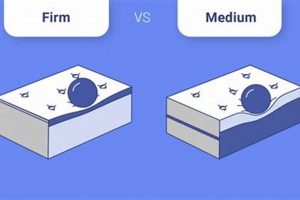
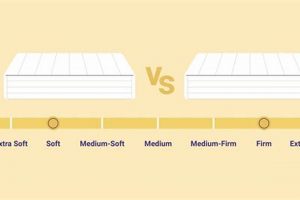
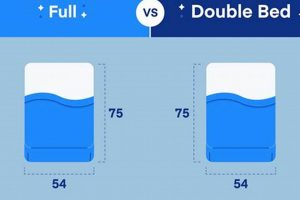
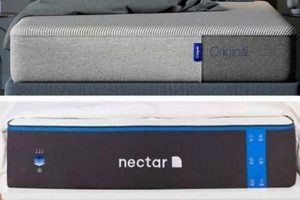
![Leesa vs Casper Mattress: Which Bed is Best [2024]? Organic & Natural Mattress Buyer’s Guide: Non-Toxic Sleep Solutions Leesa vs Casper Mattress: Which Bed is Best [2024]? | Organic & Natural Mattress Buyer’s Guide: Non-Toxic Sleep Solutions](https://mattressworldpa.com/wp-content/uploads/2025/07/th-1078-300x200.jpg)
